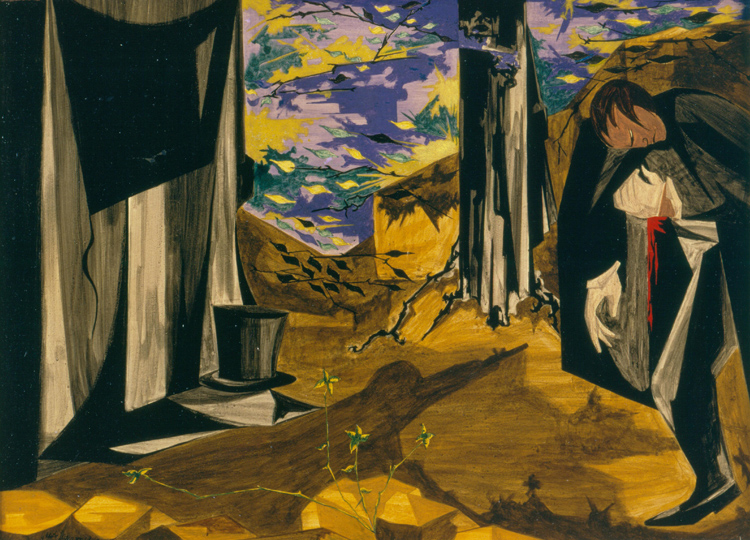This spring, former Phillips curator Beth Turner taught an undergraduate practicum at the University of Virginia focusing on Jacob Lawrence’s Struggle series. In this multi-part blog series, responses from Turner’s students in reference to individual works from the series will be posted each week.

Jacob Lawrence, Struggle … From the History of the American People, no. 17: I shall hazard much and can possibly gain nothing by the issue of this interview -Hamilton Before His Duel With Burr, 1804, 1956. Egg tempera on hardboard, 16 x 12 in. Private Collection of Harvey and Harvey-Ann Ross. © 2015 The Jacob and Gwendolyn Knight Lawrence Foundation, Seattle / Artists Rights Society (ARS), New York
I shall hazard much and can possibly gain nothing by the issue of this interview…–Hamilton before his duel with Burr, 1804
This specific piece, which depicts the infamous duel and subsequent death of Alexander Hamilton in 1804, departs from many of the other panels of the series in its stylistic qualities. The violence in the image is subtle, but salient. The composition guides the eyes through diagonals to see the splash of red, resulting from Hamilton’s injury.
Here Lawrence communicates the universal struggle that is the Civil Rights Movement through a moment of sacrifice strikingly significant to the American people. Like the participants of the Civil Rights Movement, Hamilton had everything to lose, including his life, but he felt it his moral duty to fight. This story aptly conveys the human condition that Lawrence always sought to portray. The struggle is long and bitter, but there is an innate force, driving people to continue on with the hopes of a better life. For Hamilton, a better life was one in which his honor was intact. For those struggling in the Civil Rights Movement at the time, that life included equality.
Alexis Baker



